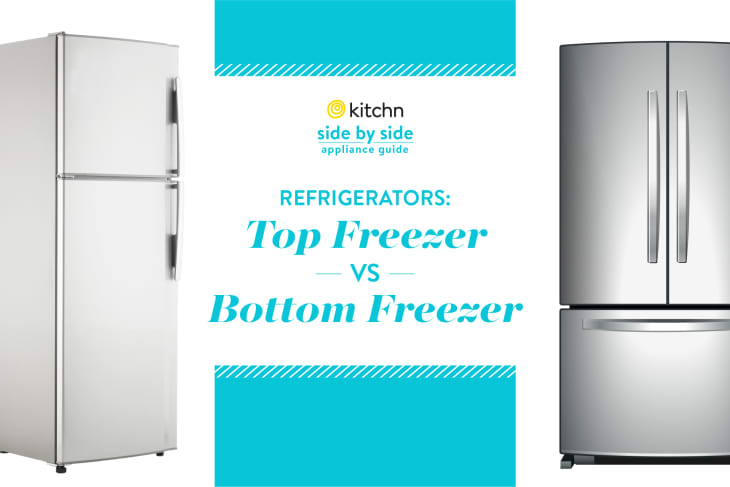Should You Get a Fridge with the Freezer on the Top or Bottom?
If you’re considering a new refrigerator, chances are the first things you’ll consider are price and size. These are critical! But, as you’ll find out once you start to do some research, there are many (many) more factors to take into consideration. One of those is freezer placement. No, it’s not sexy, but it is a question you should ask yourself: Do you want a freezer on the top or a freezer on the bottom? There are advantages (and disadvantages) to both. Here, we break them down.
The Pros and Cons of a Top Freezer
A top-freezer is the traditional option. It’s also the cheaper option and the more energy-efficient option. The main drawback? It won’t win you any design awards and you’ll have to lean over to get at whatever’s hiding behind the cheese in your fridge.
Pro: It’s more energy efficient.
The appliances’ Energy Star ratings and particular usage will vary depending on make and model, but it’s a safe bet that a top-freezer fridge is more energy efficient. According to the U.S. Department of Energy, refrigerators with top freezers use 10 to 25 percent less energy than ones with bottom freezers. Now, that doesn’t actually add up to a ton of money on your energy bill (you can save around $10 to $15 annually), but you can feel good about reducing electricity consumption.
Pro: It’s cheaper.
In addition to those energy savings, the actual appliance is cheaper when you buy the classic version with a freezer on the top. Depending on what your overall budget is, the difference can be a few hundred dollars, or almost a thousand.
Pro: There’s more usable space.
This is like one of the math problems we hated in high school, but for some reason, comparable-sized refrigerators have more usable space when the freezer is on the top. It could be that there are drawers taking up the wide open space of the bottom-freezer version, or that there’s a bit more insulation required for a freezer that sits closer to the vents that blow hot air in a home when the heat is on, but the bottom line is this: Top-freezer fridges offer more space for you to use.
Con: It probably won’t win any design awards.
If you like to think of your home an Instagram-worthy design masterpiece, the traditional style of a freezer-on-top style is just that — traditional. More modern designers favor French doors or a bottom-freezer and consider them chicer alternatives (if only because they are pricier, and denote that you splurged on your appliances).
The Pros and Cons of a Bottom Freezer
A bottom freezer is the cooler choice and the more expensive one. It also has the advantage of putting your most-used items (i.e., the things you keep in your refrigerator) right where you can see them.
Pro: It puts the fridge at eye level.
With a bottom freezer, the fridge — which you probably use more — is at eye level. You don’t have to bend and hunch to see the stuff you use every day, like the produce you have in the crisper, or whatever’s behind all that cheese. With a top freezer, that precious space right in front of your face is taken up with the stuff you use much less.
Pro: It comes with built-in organizers!
When the freezer is on the bottom, whether it’s a swing-door or a pull-drawer style, there are often organizing baskets or shelves to help you keep everything in order, as well as shelves on the door. Who knows why, but most top freezers are just wide open space.
Con: It’s more expensive.
As noted above, bottom-freezer fridges are usually more expensive than their top-freezer counterparts. For basic versions of a Whirlpool fridge, for example, the difference can be $100 to $200, but when you start adding French doors and ice makers, the difference can be more like $500 to $600.
